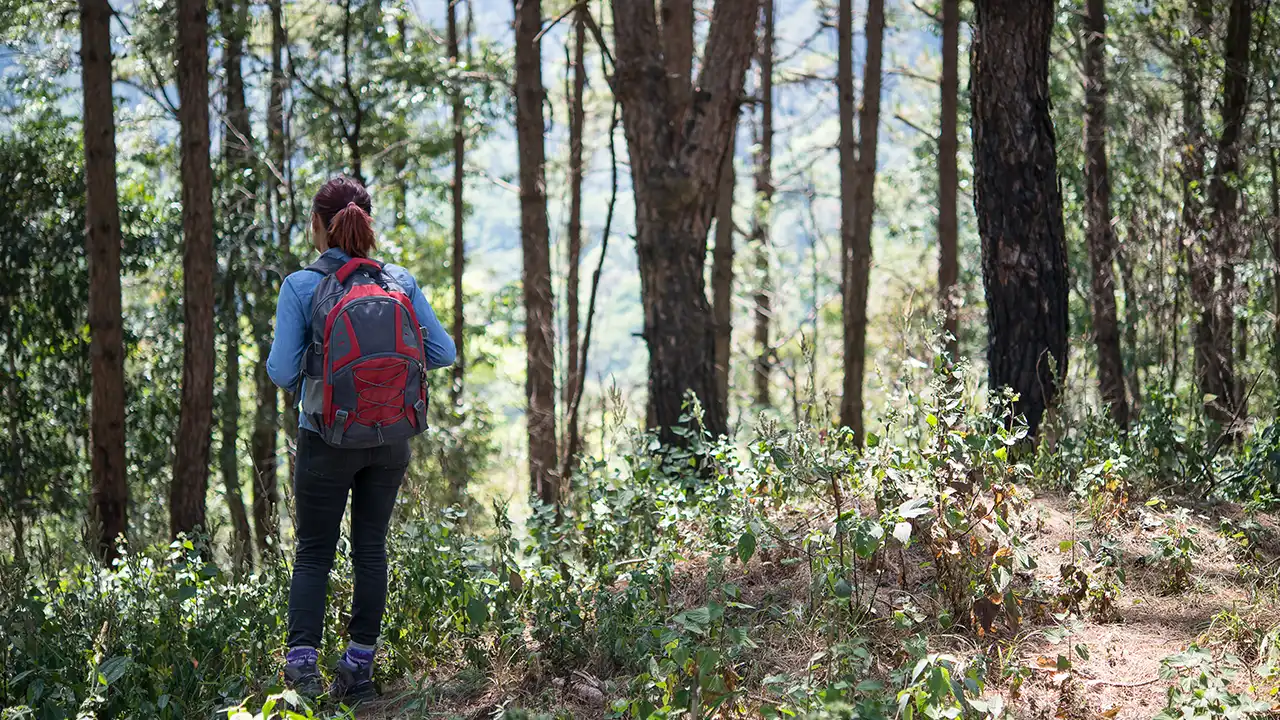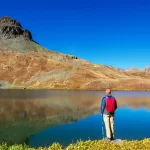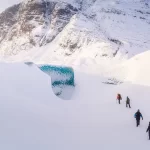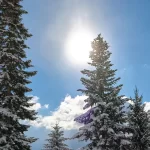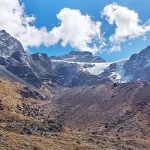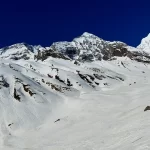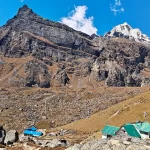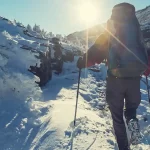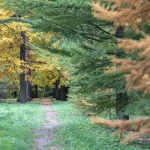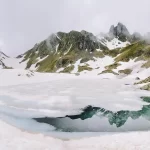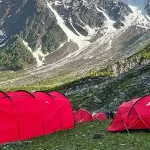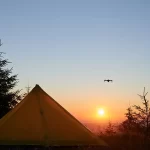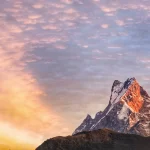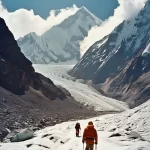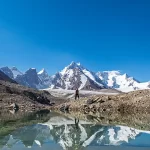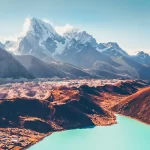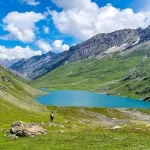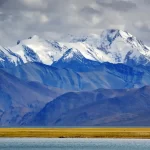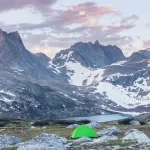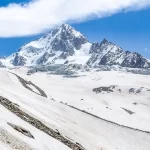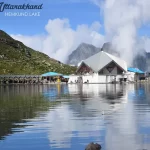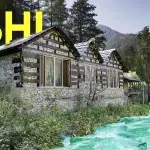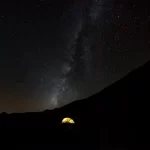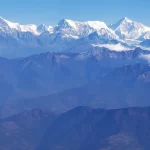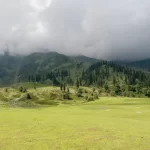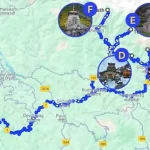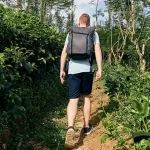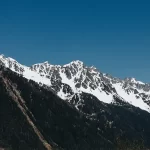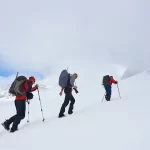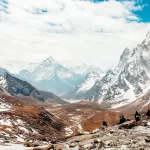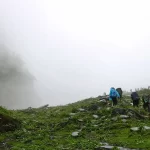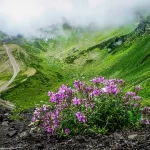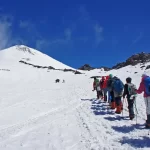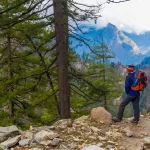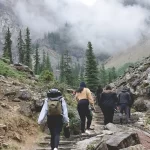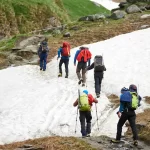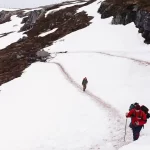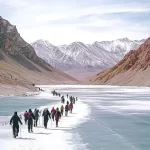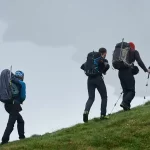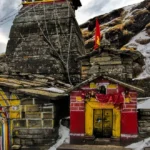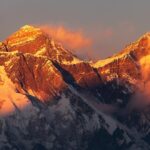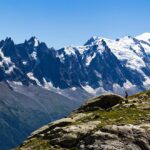Ranthankharak Trek: An Offbeat Trail in the Midst of Uttarakhand
If you’re searching for a Himalayan trek that actually stays far away from the hordes, then the Ranthankharak Trek is one of Uttarakhand’s best-kept secrets. With breathtakingly beautiful alpine terrain, pristine untouched meadows, and a glimpse of the resplendent Nanda Devi range second to none, this off-the-beaten-path trail has everything that a mountain lover could ask for—without the brashness of over-tourism.
The Ranthankharak Trek is ideal for someone who loves solitude, clean mountain air, and deep Himalayan views. It’s a path where the woods still whisper softly, and every bend has vistas you didn’t even know you were missing.
Where is the Ranthankharak Trek Located?
The Ranthankharak Trek is located in the Kumaon area of Uttarakhand, deep within the Bageshwar district. The trek is the less popular offspring of the highly visited Pindari Glacier Trek, splitting off to a high-altitude ridge known as Ranthankharak.
At nearly 4,000 meters (13,100 feet), the Ranthankharak trek provides one of the best Himalayan views—without the bigger crowds of more popular trails.
Ranthankharak Trek Itinerary
Here is a standard 6-day trekking program, ideal for nature lovers.
Day 1: Kathgodam to Khati (Drive – 8–10 hrs)
Begin your trek from Kathgodam, headed towards the picturesque village of Khati, which serves as your base camp. At the confluence of the Pindar and Sundardunga rivers, there rests the last village, Khati.
Day 2: Khati to Dwali (Trek – 11 km)
The trek from Khati to Dwali is thick with forest cover and numerous birds. You’ll be walking on wooden village bridges, waterfalls, and thick oak and pine belts.
Day 3: Dwali to Ranthankharak Ridge (Trek – 6–7 km)
Today you will break off from the Pindari trail towards the Ranthankharak ridge. The higher you ascend, the alpine meadows and open sky take over from the trees. Camp close to the ridge’s base.
Day 4: Summit Day – Ranthankharak Top and Return to Dwali (Trek – 10 km round trip)
Catch the sunrise at the summit early in the morning and witness the sun bringing golden hues to Nanda Devi, Panwali Dwar, Maiktoli, and Baljuri peaks. The ridge provides a 270-degree Himalayan view—one of the finest in Uttarakhand.
Day 5: Dwali to Khati (Trek – 11 km)
Descend through the tranquil forest back to Khati, where you’ll be greeted by warm locals and their simple mountain hospitality.
Day 6: Return drive from Khati to Kathgodam
Conclude your trip and take back memories of a trail in the Himalayas few have walked.
Best Time for the Ranthankharak Trek
The best time for the Ranthankharak Trek is:
- April to June: Clarity in the skies, new blooms, and good weather.
- Early September to early November: Post-monsoon greenery and cool wind, photographer’s paradise.
- Late Nov–Feb: Not suitable due to snowy trails and freezing temperatures.
Don’t trek in July and August as the monsoon might make the trail slippery and unsafe.
Difficulty Level
The Ranthankharak Trek is of moderate grade, suitable for novice to mid-level trekkers. Altitude gain is gradual, which is helpful for acclimatization, and there is no technical climbing involved.
Suggested Fitness:
- 30–45 minutes of walking/jogging daily
- Elementary strength exercises (squats, plank, lunges)
- Acclimatization breathing exercises for thin air
Highlights of the Ranthankharak Trek
- Untouched Trail: Ranthankharak is not like any other commercial treks. It still has a wild taste. You will hardly come across people here—shepherd villagers and the occasional trekker who does not want company.
- Diverse Landscapes: From conifer forests and wildflower meadows to high-altitude rocky ridges-this trail has it all.
- Breathtaking Summit Views: Located at 4,000 meters, Ranthankharak ridge’s panorama will leave you awestruck. Few treks in Uttarakhand offer similar panorama without ascending extreme slopes.
- Glimpses into culture: Villages like Khati give you peeks into Kumaoni life, with traditional ways meshing with serene hill life.
Camping and Housing
Tenting after Khati is unavoidable for trekking on the Ranthankharak trail. Most trek operators provide:
- Sleeping bags and tent
- Freshly cooked hot meals
- Support staff and guide professionals
- First aid kit and safety gear
In the village of Khati, guests also have an option to stay in homestays to experience village life like Himalayan residents.
Stuff to Bring
- High-ankle trekking boots
For winter:
- Thermal innerwear and fleece jacket
For windy days:
- Waterproof jacket and windcheater
- Headlamp, water bottle, and sunscreen
- Trekking poles (highly recommended)
- Basic first-aid kit with altitude meds
Leave No Trace: Be a Responsible Trekker
Ranthankharak Trek’s charm is in its virginal form. Let’s ensure it remains so:
- Carry back all trash with you
- Avoid using plastic or disposables
- Don’t destroy vegetation or intrude on wildlife
- Don’t displace the tempo and customs of local existence

